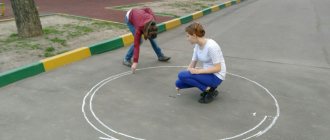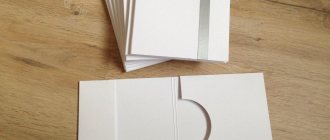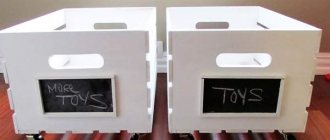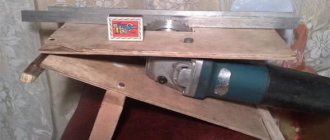Materials and tools for homemade work: - Arduino Uno controller; — 6-15 LEDs; - wires; — power supply 9V; — white tape (for QTI sensor); — QTI Sensor (you can buy it); — an old hard drive with a working engine; — caliper; — power supply for the hard drive; - Velcro; — access to a 3D printer and modeling software.
However, a 3D printer is not necessary for homemade projects; everything can be made from wood or plastic; a printer just makes everything much easier.
Homemade manufacturing process:
How everything works
To connect the hard drive you will need a power supply from your computer.
A piece of white tape is attached to the corner of the hard drive. An Arduino controller, sensor, and LEDs are mounted on a rotating stand. The sensor is used in color; it is connected parallel to the white tape. When the engine rotates, the sensor passes by the white tape and the controller commands the LEDs to turn on, eventually flashing the current time. Step one.
Disassembling the hard drive First of all, you need to disassemble the hard drive; to do this, you will need to unscrew several screws. Sometimes this is not so simple, because the screws are made for a special screwdriver and are tightened quite tightly. You need to remove the top cover, eventually you should have access to the engine. You need to remove everything unnecessary from the hard drive, including the hard drive itself. Only the motor shaft and power board should remain.
Now there is one more nuance, the motor needs to be connected, many do not know how this is done, because the motor here is multiphase and will not work without a generator on the board. First, you need to connect power to the HDD from the power supply, but it will not turn on. For it to work, you need to connect the green wire to the black one.
Step two. Making a base for mounting electronics
The author made the base using a 3D printer. In the end, everything comes out quickly, accurately and beautifully. But all this can be done from other materials, the most important thing here is that the structure securely holds the electronics, otherwise they will fly apart in different directions when the motor is turned on.
In total, the base consists of five elements:
Base
This part will contain all the electronics. The base has a hole into which the LED tower is inserted. There is also a battery pack and an Arduino holder here, they are mounted on glue. At the bottom of the center there is a connecting ring that the connecting piece fits into.
Connecting piece
This part has three holes, with the help of which it is attached to the hard drive hub. The base rests on it.
LED Tower
This element holds the LEDs. A total of 5 of them are needed, but if necessary, you can install 15.
Arduino holder (optional)
This item can be purchased if necessary.
Battery holder (optional)
This item can be purchased
If you decide to print parts on a printer, the necessary STL and ipt files are included for these purposes.
Due to the fact that hard drives are different, the author’s part may not be suitable for mounting. In this regard, you will need to change the files using the editor, making the mount specifically for your hard drive.
Step three. Installing LEDs
LEDs are mounted on an LED tower.
For homemade work you will need 5 LEDs, this is specifically for watches. All positive LED contacts are placed in one row, just like the negative ones. Step four.
Assembling the base The connecting part is attached to the engine hub using screws. The LED tower is inserted into the base. The connection is fixed with glue. The base is installed on the connecting piece and also sits on the glue.
Step five.
Battery and Arduino controller holder The holders are installed on the base.
The author attaches them with glue. Next, when the glue has dried, you can install the Arduino controller and 9V battery in their places. Step six.
Connecting LEDs to the negative All negative contacts of the LEDs need to be connected with one wire, and then this wire is connected to ground on the Arduino controller. A switch is also installed on the base using glue. Next, you need to remember to also install the QTI sensor on the base. It should be pointing down. There should be a tape parallel to the sensor, approximately 1 inch long.
Step seven.
How all electronics are connected Step eight.
Setting up the clock using the code The Arduino controller lights up the LEDs when the sensor passes near the white tape. We know that the QTI sensor is hovering over the white tape because it returns a certain range of values. These values will be different for all POV watches. Therefore, your task is to find this threshold for your clock and enter it into the Arduino code.
To do this, you need to download sensorTest.ino to your controller. Open the serial monitor by placing QTI above the white ribbon. The serial monitor will print the range of values. The most common value should be written down
Adjust the threshold until it is comfortable. Since the author had a total value of 100, he guaranteed that his condition would be true if ls1 is less than 110 and greater than 90. We want this condition to be true if the QTI sensor passes over the white tape.
The final stage. Checking the clock
To check, you need to load hddClockTime2.ino, turning on the power of the controller and the power of the hard drive.
The clock should show the current time. If the time is incorrect, it can be changed in code. Due to the fact that the homemade product will create strong vibrations, the hard drive must be securely secured.
The author secured it statically using corners and screws. All necessary files for creating a clock can be downloaded here:
Today we will tell you how to make an interesting table clock from a hard drive with your own hands.
Hi all! I will share with you the stages and, of course, the result of making tabletops from. Simply put, a hard drive from . By chance, I got three disks. But he made the watch from only one, and the parts of the others were included in this watch.
In the photo you can see the disk in an almost disassembled state, with the cover already removed.
The shiny L-shaped parts near the disk body are “holders” of magnets from the other two hard drives. (The magnets are very strong and are not easy to remove). They have been useful to me in other products. I made watch legs from holders.
By the way, no additional parts were needed; all the screws and bolts appeared during disassembly. The most difficult thing in assembling a watch is polishing the disc itself until it shines. It has a mirror surface and gets dirty very easily. But scratching it is not so easy. The photo shows the assembly stages. The washer with holes is a pressure washer from the disk.
I had to glue an M10 washer to it, because otherwise, when assembling with the clock mechanism, it (the mechanism) would not be able to tighten the disk and the hard drive case.
I bought the clock mechanism complete with hands separately (about 250 rubles), but it can be removed from an old, boring watch.
Everything gradually came together, was wiped off from fingerprints, and the arrows and battery were put back in place. We put it in a prominent place and enjoy a beautiful and useful thing!)
Do you have a broken hard drive? Or do you know where one can be found... Are you ready to turn such a “hard drive” into a unique watch?
This project only requires a little skill, ingenuity and electronics knowledge.
The article presents two versions of the clock: a simple one without a dial and one that shows the time.
In the simple version you can see three arrows, which in appearance resemble simple “mechanics”. Three hands – hour, minute and second. Red is hour, green is minute, blue is second.
In the second version, the hard drive can display the time.
A hard drive platter rotates at a speed of more than 60 times per second. If you cut a narrow slit on the plate, this will allow the LEDs to shine through, and due to the high-speed rotation, you can fool the eye by creating a stable image. This phenomenon is known as “preservation of vision” (POV). There are many projects where LEDs (either moved or the observer himself moves) are used to create images. The LEDs used in this project do not move. The image is constructed using the interference slits of a rotating disk.
The version that displays numbers is more complex... You can easily see the time, while an animation will be displayed in the background.
Video selection
In this selection you will find other options for making your own watches.
Wrist:
And other decoration methods:
Wall clocks are a very practical interior detail. In the kitchen, they make it possible to keep track of time without being distracted from cooking or turning on the phone for this (especially since your hands may be covered in flour, oil or something else while cooking). Located in the room, they allow you to quickly find out the time without reaching into your pocket for your mobile phone. Eco-style lovers can make a watch out of wood with their own hands.
Printable templates
Pictures enlarge by clicking. You can print the template, glue it on cardboard, cut it out, attach the arrows and study...
I hope you enjoyed this tutorial and will stop by again when you decide to build something with your little one. And I am constantly adding to the collection for creativity so that you can find a hint for all your questions. Therefore, subscribe, then you won’t miss anything! And tell your friends about the site so that they can get all the information they need!
Now I say goodbye! Goodbye everybody!
A stylish wall or table clock can radically influence the mood in the interior and add some of its own flavor to it. And wrist chronometers can change a person’s image. However, you can spend a lot of time searching for a suitable option and still not find what you need. In today's article we bring to your attention ideas on how you can make a watch yourself; the master class describes in detail various techniques for making and decorating watches.








